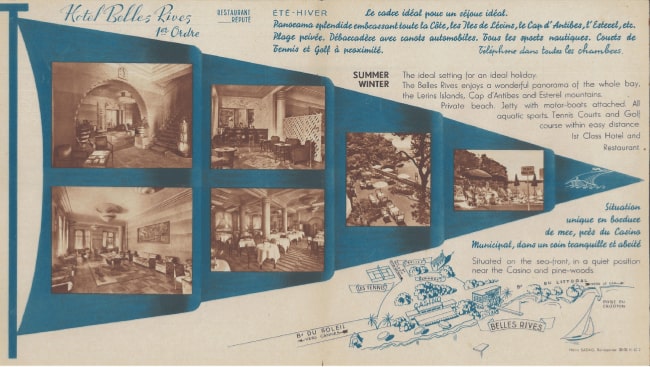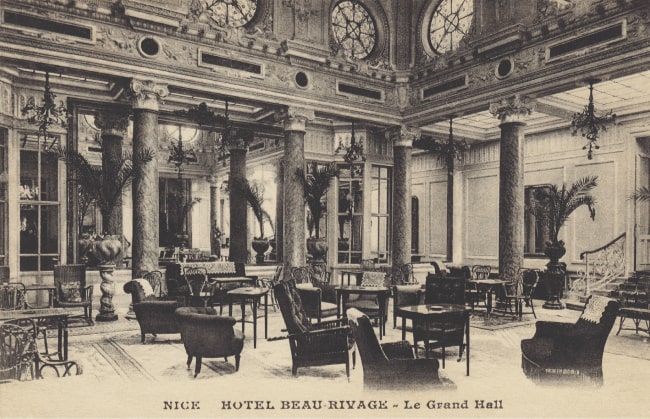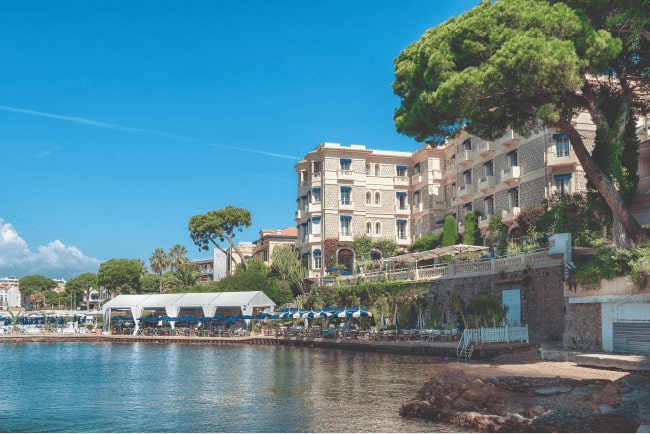Suppose you do not like your DNA? Let's write about it!
An Interview With Nazi Leader Hermann Goering's Great-Niece
How do you cope with evil ancestry? Echo interview published in The Atlantic Magazine
By Roc Morin
 |
| DNA- the fabric of life |
"After the last right turn," Bettina's directions read, "you will see a driveway on the left about 50 feet from the corner. The number 290 is placed on a fence post. (Many people can't seem to see this sign and go to the end of the road where they get shot, game lost!)"
It was a dark little joke, the kind of gallows humor I got used to hearing as an EMT and war correspondent--professions overly preoccupied with mortality. The attitude fit Bettina Goering well. As great-niece of Nazi Germany's second in command, Hermann Goering, death is her family legacy.
I tracked the 56 year-old down in Santa Fe at the office where she works as an acupuncturist living under the surname of her ex-husband, which she didn't want named in this story. Bettina invited me to her home outside the city for a formal interview. The last eight miles of the drive took nearly an hour as I bounded and jerked over a tangle of third-world roads, trailing a comet tail of dust. It had rained hard the week before, forcing the persistently barren land to yield lush displays of green, with only cows and horses around to enjoy it."When I see Hermann as a family person, I think he's really nice, and charming, and incredibly caretaking, and it's hard for me to see flaws. But then you see what he does in politics and how he killed people, including his so-called friends."
Bettina met me at the door of her modern two-story home. "You found it!" she exclaimed in her heavy German accent.
"No one's more surprised than me!" I replied with a laugh. "This place seems to want to stay lost."
She led me to her kitchen where her husband of 23 years, Adi Pieper, sat behind a table. We shook hands. The house was nearly empty: no clutter, no personal items. It seemed to be a place without memory. I later learned that the couple was in the process of selling their property and had purposefully made it neutral.
"So," I began, "you had the name Goering when you were growing up in Germany. Was there a stigma?"
"Not really," Bettina replied. "That is the weird thing. Because I grew up in the 50s and early 60s, there was this time of utter denial. Germany had just dug itself out of its past and they were starting to get wealthy again. Later, there were a few people who would make me cringe by saying Hermann was a good guy."
"My mother said that," Adi added, "'Oh, we all loved him,' she said, when she found out Bettina and I were starting a relationship. He was the most liked one, the most popular Nazi. He appeared so royal, so nice."
"Like a big child," Bettina added.
"You've met with the children of Holocaust survivors and have spoken publicly about your family history. Why do you feel that you have to embrace this Goering identity?" I asked.
"It was never a choice," she replied. " That's how I choose to deal with conflicts."
"What about the rest of your family, growing up?"
"I had trouble at home. That's the gist of the matter. My parents were always a bit rocky together, their relationship. But, when I was about 10 or 11 my grandmother from my father's side--the Goering side--moved in because she was very sick. That created so much more drama. She was the Nazi in the family and she was very difficult to deal with. She was in the last stages of syphilis, and that makes you very stuck in your ways. Your pupils don't move anymore, for example. They just stay in one stage. I think it literally eats up your brain. So, she made whatever trouble was there before even worse. I left home at the age of 13 after a fight with my dad."
"What kind of things did she believe?"
"It's hard to just put it in a few words. She had always this upper-class demeanor, that you think you're better than everyone."
"Not to mention that the Holocaust never happened," Adi interjected. "'All lies! All lies!'"
"It came up," Bettina continued. "because we watched a documentary on TV. It was about Auschwitz."
"Was that your first knowledge of the Holocaust?"
"That was one of them for sure."
"How did you feel?"
"I felt horrible! I felt even more horrible she'd deny it. And she was part of it. If anyone was part of it, she was."
"How so?"
"Well, she was very close to Hermann and she was in charge of the Red Cross. She should have known, you would think. I mean, they made Theresienstadt for the Red Cross. They built it in such a way with false walls and everything so that it looked like a nice working camp where they had theater groups and all kinds of stuff."
"Right," I added, "that was their showpiece concentration camp to demonstrate that the Nazis were humanitarians. Of course, they shipped off half the prisoners to Auschwitz before visitors came so it wouldn't look overcrowded."
 |
| (- 12 January 1893 – D- 15 October 1946) was a German politician, military leader and convicted Nazi war criminal. |
"Did your grandmother have a good side?"
"I really judged this family as negative, almost all of them. That's something that I've been now working to change, and I'm seeing a much more complex picture even of my grandmother. It's very illuminating."
"What changed?"
"I did research. My grandmother was brought up in a family where all the men died all the time. They were all military. Her father died when she was five. There were so many wars back then."
"Yes, you can imagine that with so much loss in her life, she had to convince herself it was for something worthwhile."
"Exactly."
"Do you see any goodness in Hermann?"
"That's hard to say. Is somebody ever totally bad or good? I hope not. I think certain circumstances happen that might turn somebody into a psychopath. When I see Hermann as a family person, I think he's really nice, and charming, and incredibly care taking, and it's hard for me to see flaws. But then you see what he does in politics and how he killed people, including his so-called friends."
"What do you mean?"
"Are you familiar with the Röhm Putsch?"
"You mean when the Nazis purged the army?"
"That shocked me almost more than some of his later actions, because they were his friends. He had no qualms to shoot just anybody."
"Are you afraid that you inherited some of his traits?"
"Yes and no. I met a cousin that I hadn't seen in nearly 50 years and we both have big qualms to do anything too big--to be in a position of any power because there is something in the background that you could do something bad."
"And you have the desire for power?"
"No, not even. But, it's happened. I'm somebody who naturally takes charge, who can easily be in charge of people, but it scares me at the same time that I could abuse the power as he did. It's a collective consciousness thing. It might be in my DNA. I think they're starting to prove that all the experiences of your ancestors manifest themselves in the DNA."
"Interesting," I said. "I have Jewish friends who have dreams of being in the Holocaust."
"That's what I mean. It's in your DNA somewhere. Sometimes I get feelings that I cannot explain. I experience also the Holocaust. Do we have past lives? How come I have visions of that too?"
"Can you describe that experience?"
"We were in Weimar a few years ago, next to Buchenwald, one of the concentration camps. It was like these ghosts had attached themselves to me. Afterwards I couldn't eat."
"What did it feel like?"
"Like I wasn't myself. I was really depressed, afraid. I had a vision of being in a small attic room, it could have been in Germany, afraid for my life. I personally think there are past lives for sure."
"So, the implication is that you were a Jew in another life?"
"Or somebody who was persecuted, or a member of the resistance."
"Getting back to the issue of DNA, I wanted to ask you about your decision to sterilize yourself. Were you worried about continuing Hermann's legacy?"
"It's complex. I was about 30 when I did it. I was living in a commune with Osho in Pune, India and a lot of people did it in that commune. There are too many kids in the world, so I won't have any. My brother did it too."
"So, it wasn't specifically the Goering genes?"
"No. However, when my brother did it he said, 'I cut the line.' He's dramatic like that. And when he said that, it became clear to me that that must have influenced me too. I had a fear about my own power to maybe pass something on."
"What was it like living in the Osho commune?"
"There were a lot of Germans, Jews, and Japanese there. It was the 70s and it was like the kids of World War II all came together in a friendly way. And some of it was in encounter groups where you lived out some of these old experiences."
"What kind of experiences?"
Bettina glanced at her husband.
"For example," Adi offered, "I'm from Berlin, so I'm Prussian. They had me stand up and march and they all threw pillows at me, yelling 'You fucking Nazi!' They called me Obersturmbannführer and I had to just take that all in. They asked, 'How do you feel about that? That's what your parents did and that's what you are because you are their child.' And I felt a big collective guilt inside that I wasn't aware of. Nobody in my family did anything, but I still have this guilt. I didn't know I had it. I was so surprised."
"Were you able to get past it?"
"It's never totally past. You just put awareness to it so that it has no more power over you."
"Is that part of what coming to America represents--a clean start?"
"Part of it."
"So, having left Germany, do you still participate in German culture?"
"For sure," replied Adi. "We go to the opera..."
"Wagner?" I queried.
"No."
"When you say no, is that a reaction against the music or the composer?"
"No, I think it's nice music. It's really good. But, he was an anti-Semite."

"So, even musical notes can accumulate guilt?"
"Quite amazing."
"What else do you have from Germany?" I asked, turning back to Bettina. "Any heirlooms from Hermann?"
"Just photographs of him with my father and grandmother. I have a Goering insignia ring, which I actually wear. I inherited it from my mom when she died."
When I asked to see the photographs, Bettina pulled out an album and began to flip through.
"What do you see when you look at these photographs?" I asked.
"Different things. These are a bunch of my uncles--the brothers of my father who died so young. I've developed almost a relationship to them. It's funny. I got to know them or something. I feel like they are asking me to remember them."
"You got to know them through the photographs?"
"Yes, though sometimes I wonder if I should get rid of this album. I'm the only one who has any relation to these guys. Nobody else does. My brother doesn't and we're the last of the line."
"Can you talk more about the relationship you've developed with these images?"
"So, I had an illumination about the boy," she said, pointing at a photograph of her uncle, Peter Goering. "He was only a boy. He was 19. As I got to know more about them, I felt really bad. I felt the grief of losing them so young--of my father and my grandmother--I felt that."
"And what do you see when you look at the pictures of them with Hermann?"
"He's very proud of them, and they are proud of him. You can tell."
"You can see in the picture how much they love each other?"
"Yeah, yeah, for sure."
"Do you see a resemblance between Hermann and yourself?'
"Sure--cheekbones, nose, even the mouth. I was a teenager when I first saw a photograph of him before he got fat, back when he was young, and I took a deep breath."
"How did you feel?"
"I was shocked. I ripped it up. I was like, 'Fuck, is that me?”
https://www.theatlantic.com/international/archive/2013/10/an-interview-with-nazi-leader-hermann-goerings-great-niece/280579/#:~:text=Roc%20Morin%20is%20a%20journalist%20based%20in%20San%20Francisco%20and%20the%20curator%20of%20the%20World%20Dream%20Atlas.
Labels: Bettina Goering, Roc Martin, The Atlantic, The Daily Mail

















